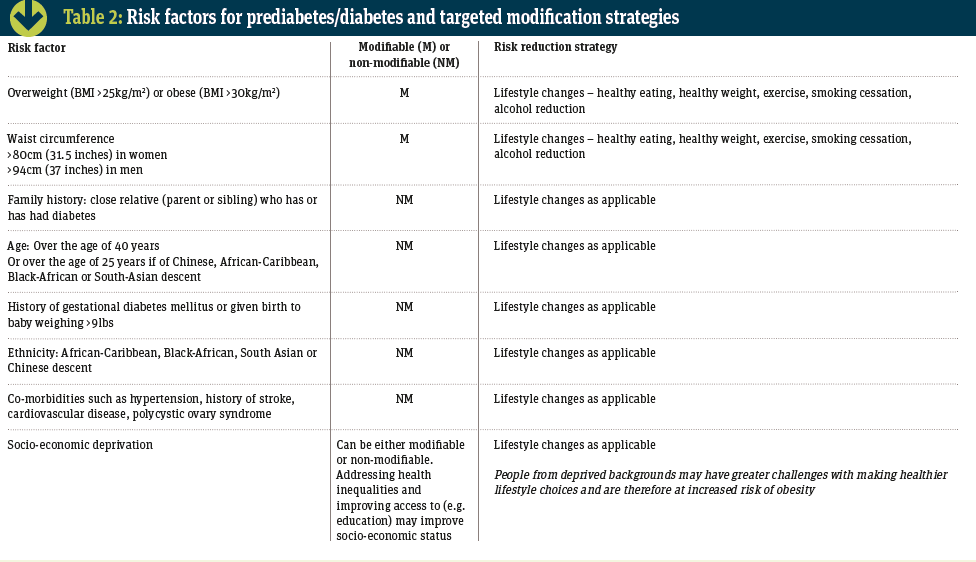
Risk factors for type 2 diabetes and non-diabetic hyperglycaemia include genetic factors, age and ethnicity (see Table 2). A large proportion of cases are associated with modifiable risk factors such as obesity.
The risk of developing diabetes, as already stated, is seven times greater for people who are obese and three times greater for those who are overweight. Approximately a third of the projected increase in the number of people with type 2 diabetes is due to obesity.
The rising prevalence of obesity will continue to lead to a rise in the prevalence of nondiabetic hyperglycaemia and type 2 diabetes.
Managing the growing incidence and economic burden of diabetes is one of the most crucial clinical challenges of the 21st century. Evidence from the Diabetes Prevention Program (USA) shows that lifestyle modification with physical activity and/or healthy diet can delay or prevent the onset of type 2 diabetes.
The incidence of diabetes was reduced by 58 per cent over three years in the programme’s controlled trial. Lifestyle intervention with a 7 per cent weight loss goal and at least 2.5 hours of physical activity per week were shown to be effective.

